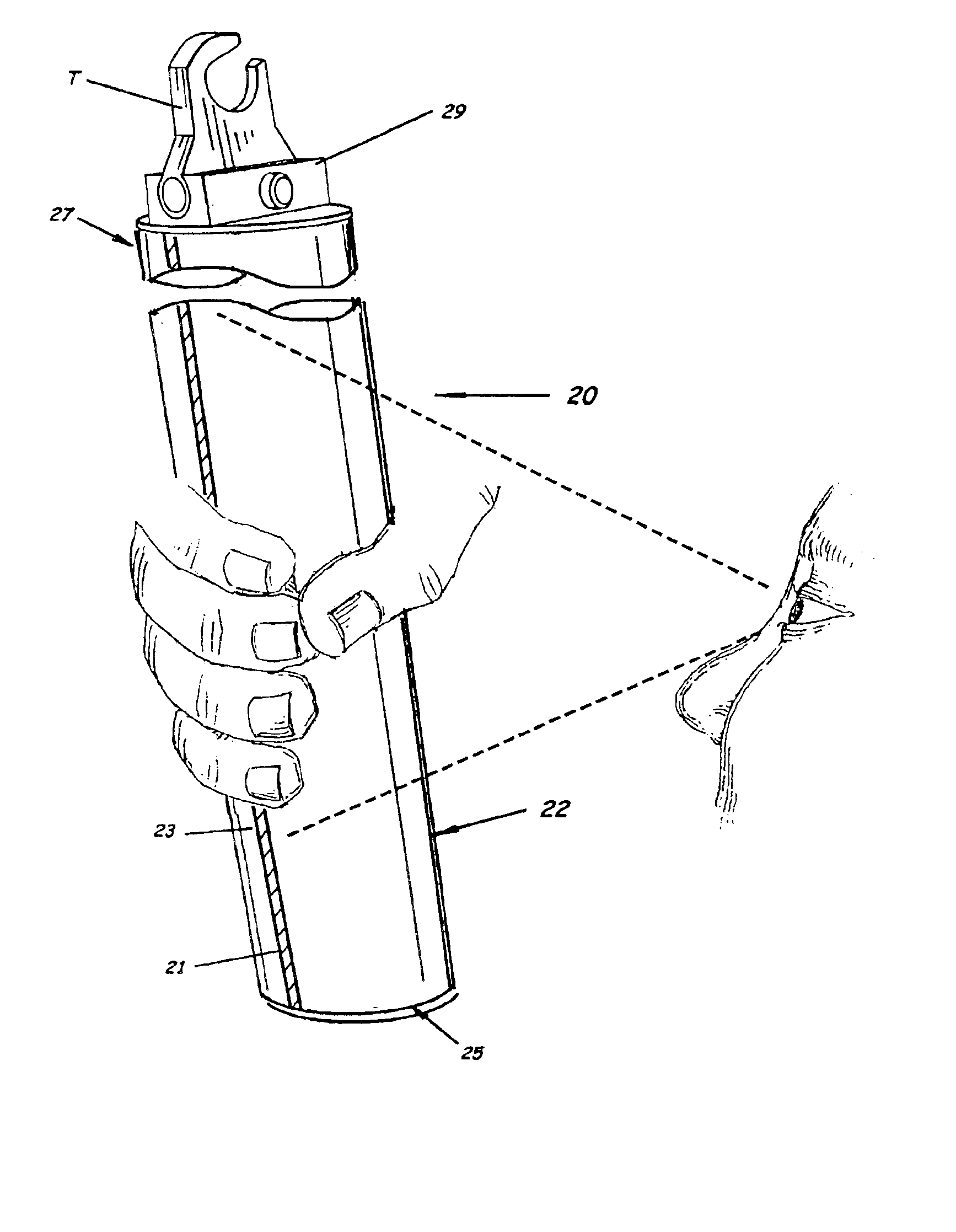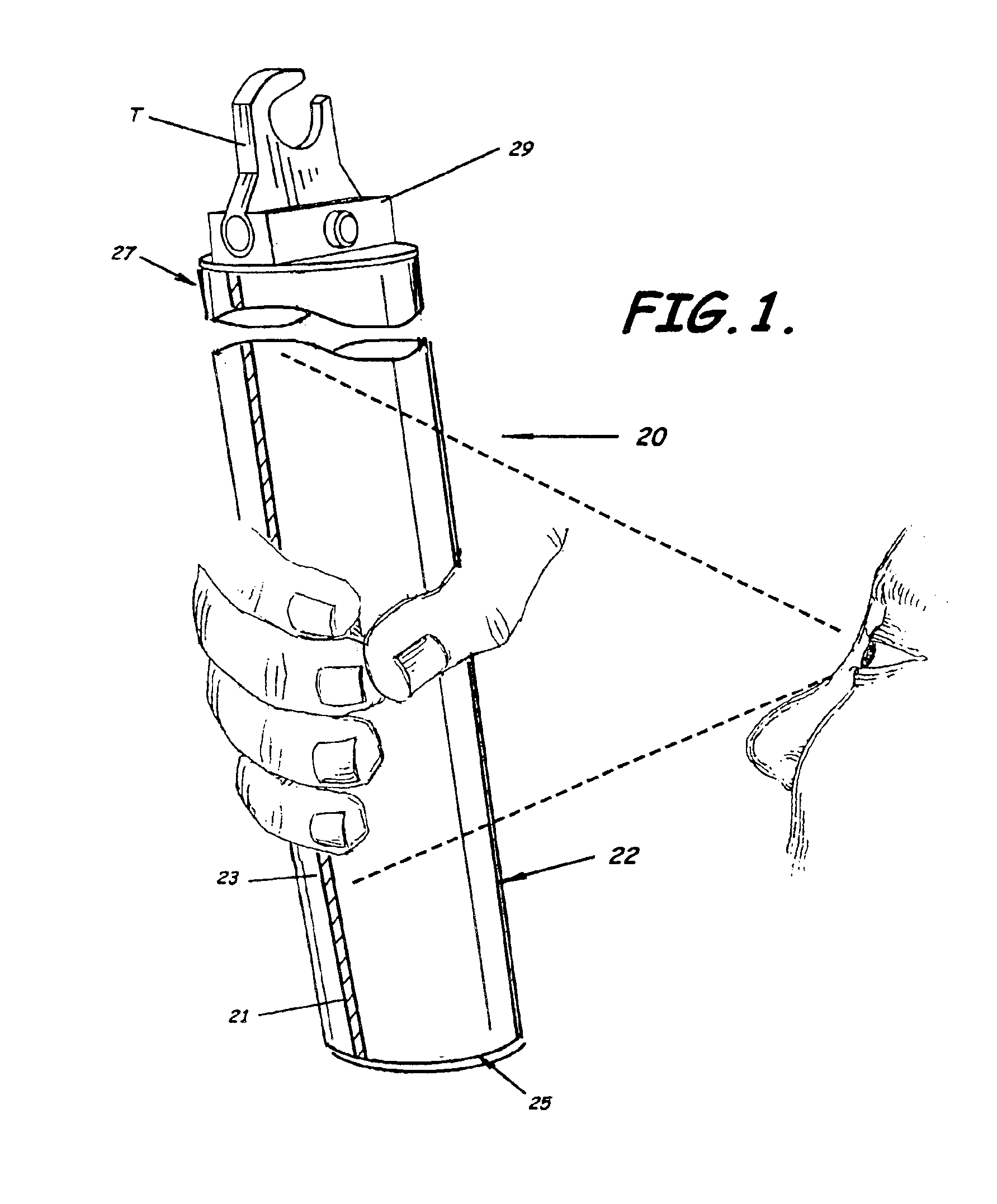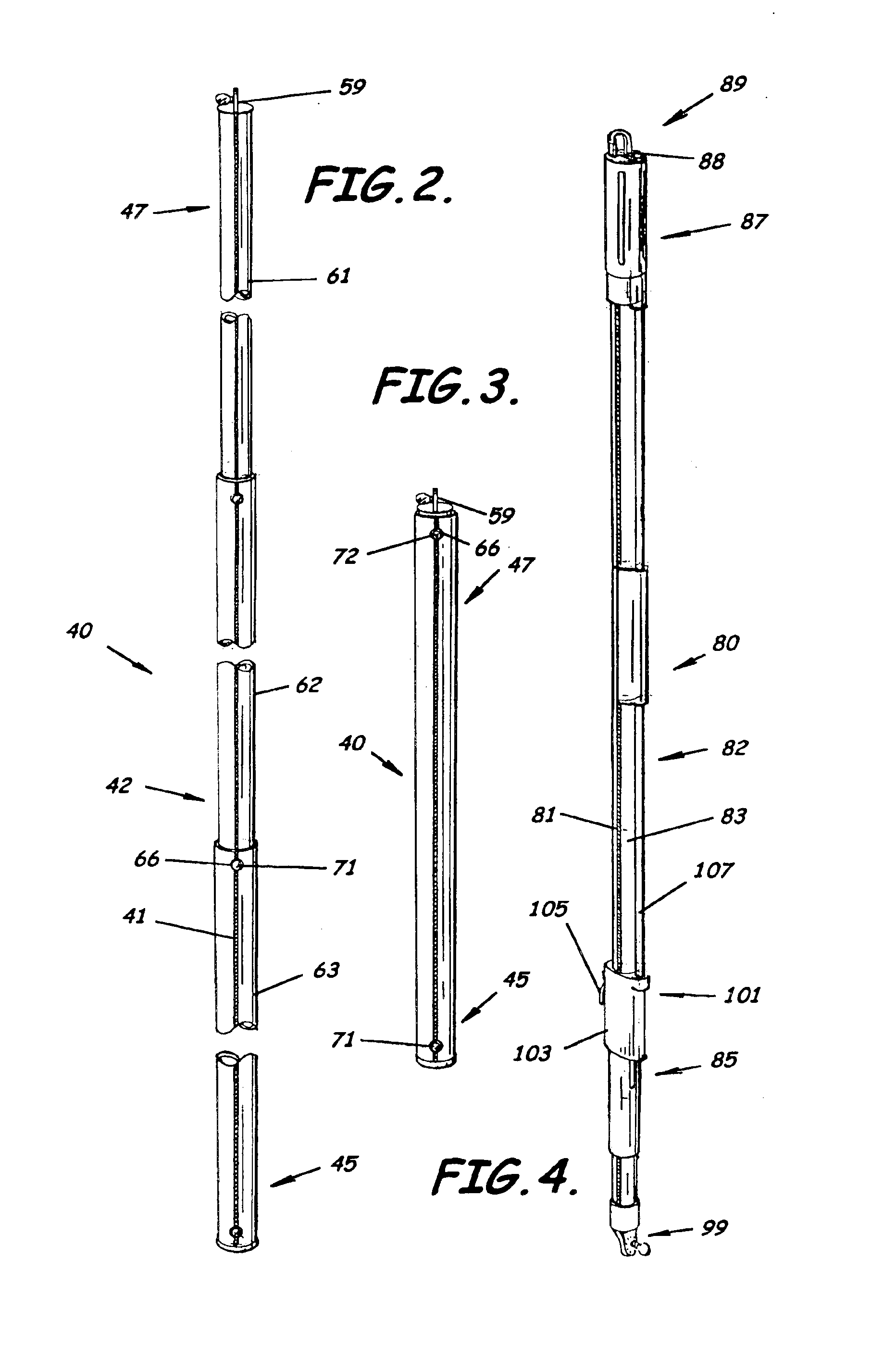Utility line pole having alignment indicator and associated methods
a technology of utility line and alignment indicator, which is applied in the direction of overhead line/cable apparatus, electrical cable installation, substation/switching arrangement casing, etc., can solve the problems of exacerbated problems, difficulty in locking individual sections of telescoping poles, and inability to easily position multiple pole sections
- Summary
- Abstract
- Description
- Claims
- Application Information
AI Technical Summary
Benefits of technology
Problems solved by technology
Method used
Image
Examples
Embodiment Construction
Embodiments of the present invention will now be described more fully hereinafter with reference to the accompanying drawings, which illustrate embodiments of the invention. This invention may, however, be embodied in many other different forms and should not be construed as limited to the illustrated embodiments set forth herein. Rather, these embodiments are provided so that this disclosure will be thorough and complete, and will fully convey the scope of the invention to those skilled in the art. Like numbers refer to like elements throughout. Prime notation, if used, indicates similar elements in alternative embodiments.
As illustrated in FIG. 1, embodiments of the present invention advantageously provide a portable utility power line pole 20 adapted to be held in the hand of a user for use in association with electrical power distribution lines and having an alignment indicator 21 to provide the user continuous visualization of a user selected orientation of a utility power line...
PUM
 Login to View More
Login to View More Abstract
Description
Claims
Application Information
 Login to View More
Login to View More - R&D
- Intellectual Property
- Life Sciences
- Materials
- Tech Scout
- Unparalleled Data Quality
- Higher Quality Content
- 60% Fewer Hallucinations
Browse by: Latest US Patents, China's latest patents, Technical Efficacy Thesaurus, Application Domain, Technology Topic, Popular Technical Reports.
© 2025 PatSnap. All rights reserved.Legal|Privacy policy|Modern Slavery Act Transparency Statement|Sitemap|About US| Contact US: help@patsnap.com



